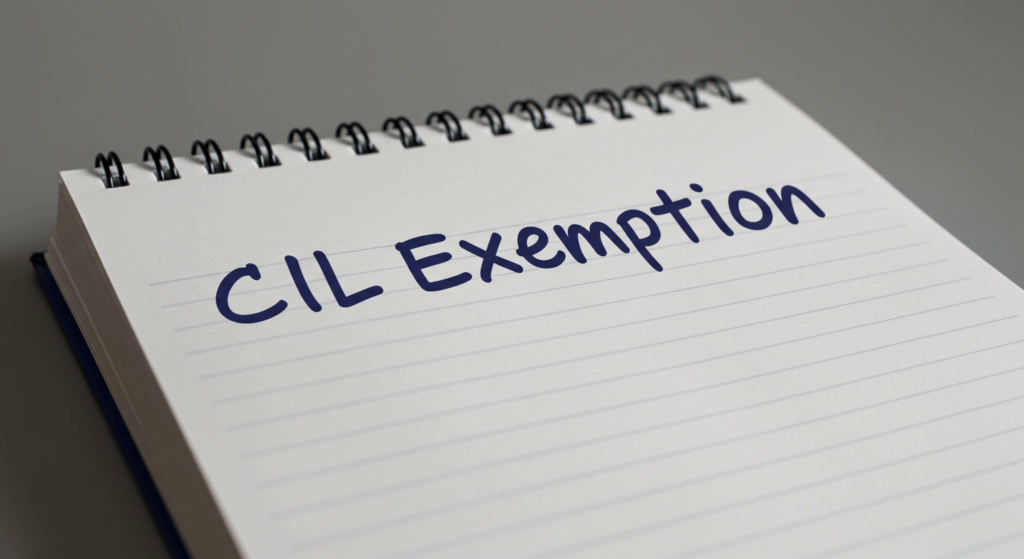Claiming CIL exemptions or relief
The full amount of CIL is payable unless you claim relief. This must not be skipped prior to commencement of works. If works start and the relief has not been claimed your forfeit the right to the relief.
Each relief or exemption will have its own qualifying requirements – you must meet each requirement and continue to do so beyond the completion of the build. If you sell the property, you will be liable for the full amount.
Check out our popular frequently answered questions page.
See our new CIL flowchart (CIL Flowchart PDF will open in a new tab) to understand the process.

Self Build Exemption for CIL
There are three types of self build exemption:
- self build exemption – for a new dwelling
- self build exemption – for a residential annexe
- self build exemption – for a residential extension
The exemptions apply to anybody who is building, or commissioning, their own home, residential extension or residential annex. Individuals claiming the exemption must own the property and intend to live in it as owner-occupier for a minimum of 3 years following completion.
See this page for more information on self-build exemptions for a new dwelling, a residential annexe and a residential extension.
Charitable Relief
Some types of charitable development are entitled to relief from CIL. This is not automatic and must be applied for.
A charitable institution which owns a material interest in the land will get full relief from their share of the liability where the chargeable development will be used ‘wholly, or mainly, for charitable purposes’ (whether of the claimant or of the claimant and other charitable institutions) and they meet the requirements of Regulation 43. More information is available on the Government website here.
If the development is left unoccupied, it is still eligible for charitable relief.
There is no mandatory relief if that part of development to be used for charitable purposes will not be occupied or under the control of a charity, or if the material interest is owned jointly by a charity and a non-charity, or if the relief would constitute a State Aid.
You can apply for Charitable Relief via Form 10.
Social Housing Relief
Social Housing Relief is a mandatory relief from the levy which is available for those dwellings and communal areas that are either let in specified tenancies by a private registered provider of social housing, or a registered social landlord, or a local housing authority, or are occupied under specified shared ownership arrangements. Subject to meeting specific conditions, Social Housing Relief can also be applied to discounted rental properties provided by bodies which are neither a local authority nor a private registered provider.
To qualify for social housing relief, the claimant must own a material interest in the relevant land and have assumed liability to pay the levy for the whole chargeable development.
Mandatory social housing relief can also apply to dwellings where the first and subsequent sales are for no more than 70% of their market value (“First Homes”). To be eligible, a planning obligation must be entered into prior to the first sale of the dwelling designed to ensure that any subsequent sale of the dwelling is for no more than 70 percent of its market value. Regulation 49 (as amended by the 2015 Regulations and the 2020 (No. 2) Regulations) defines where social housing relief applies.
When applying for relief, a claimant must provide evidence that the chargeable development qualifies for social housing relief. The Regulations provide that dwellings no longer meeting these requirements must pay the levy.
Further details are on the Government website here defines when Social Housing Relief applies.
You can apply for Social Housing Relief via Form 10.
Don’t forget!
It is important that you don’t begin work until you submit your application for exemption and you receive notice from the local authority with a decision. If you start any work, including digging foundations, your application for exemption will be refused.
If you fail to submit a Commencement Notice before starting any work, then the local authority will charge the full amount for CIL.
The local authority can also impose surcharges, in addition to the full CIL charge. So it is important to get these details correct.
You have the right to appeal against a grant of exemption under Regulation 116A and 116B for either a residential annex or a new dwelling whole house. Appeals should be made to the Valuation Office Agency. This must be done within 28 days of the decision notice from the local authority. Commencing work at any time, will invalidate the appeal if this has not been decided.
CIL page updated: 12th February 2025




